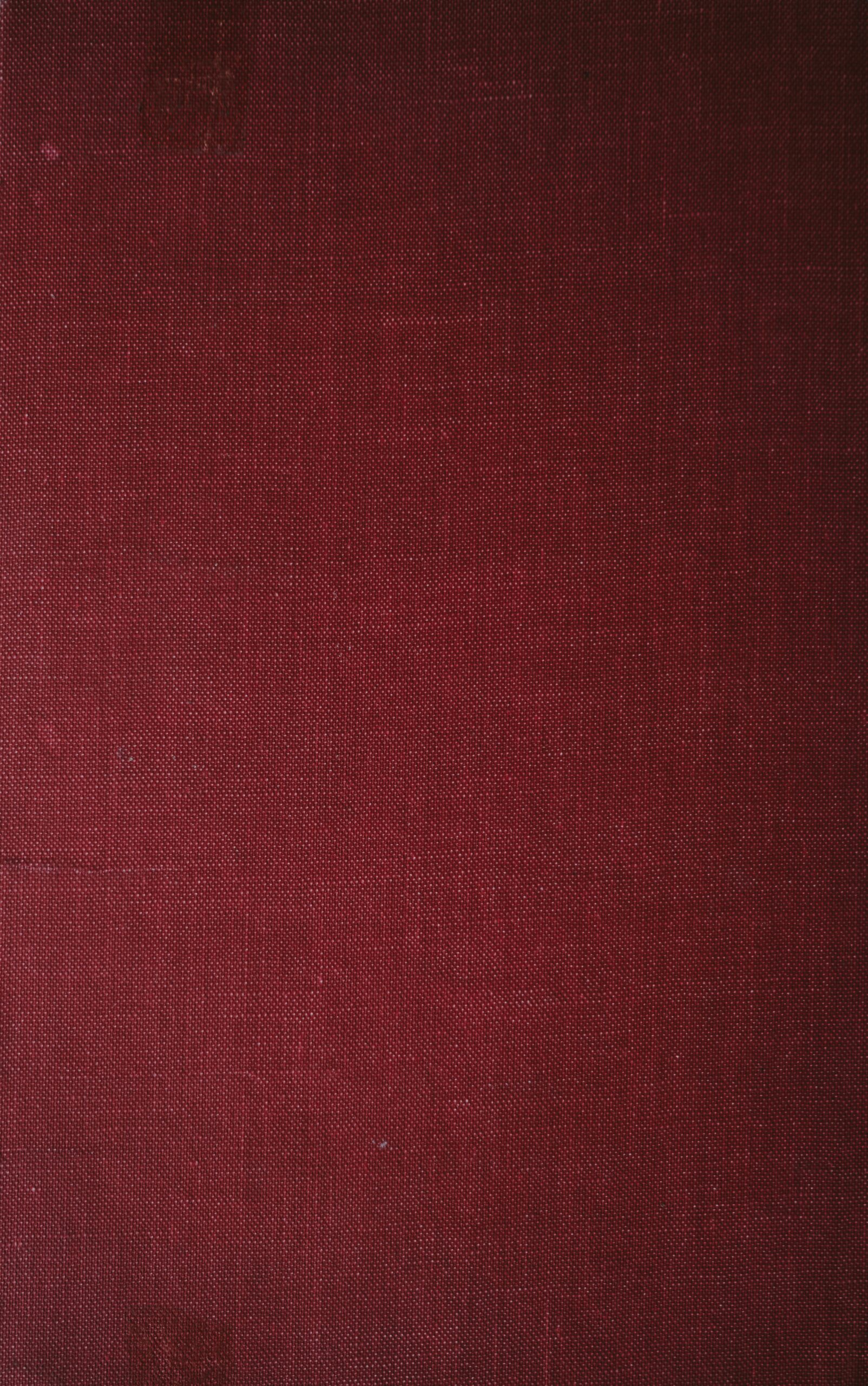Have you ever wondered if you can use acrylic paint to dye fabric? Look no further, because in this article, we will explore the possibility of using acrylic paint as a dye for fabric. Many people are curious if this is a viable option, and we will discuss the benefits, drawbacks, and techniques involved in dyeing fabric with acrylic paint. Get ready to learn how you can unleash your creativity and transform your fabrics using acrylic paint!
Choosing the Right Fabric
When it comes to dyeing fabric with acrylic paint, it’s important to choose the right type of fabric. Different fabrics have different absorbency levels and textures, which can affect how well the paint adheres and how vibrant the colors appear. There are three main categories of fabrics to consider: natural fabrics, synthetic fabrics, and blended fabrics.
Natural Fabrics
Natural fabrics, such as cotton, linen, silk, and wool, are made from materials found in nature. These fabrics are generally breathable, comfortable, and easy to work with. When dyeing natural fabrics with acrylic paint, the paint tends to adhere well and the colors can appear vibrant. However, it’s important to note that some natural fabrics may require pre-treatment or special techniques to achieve the desired results.
Synthetic Fabrics
Synthetic fabrics, such as polyester, nylon, and acrylic, are man-made materials that are known for their durability and resistance to wrinkles. Dyeing synthetic fabrics with acrylic paint can be more challenging due to the slick surface of the fabric, which may prevent the paint from adhering properly. It is possible to dye synthetic fabrics with acrylic paint by using certain techniques and additives, but it’s important to keep in mind that the results may not be as vibrant or long-lasting compared to natural fabrics.
Blended Fabrics
Blended fabrics, as the name suggests, are made by combining natural and synthetic fibers. Examples of blended fabrics include cotton/polyester blends and wool/acrylic blends. When dyeing blended fabrics with acrylic paint, it’s important to consider the characteristics of both the natural and synthetic fibers. The natural fibers may absorb the paint differently than the synthetic fibers, resulting in variations in color and texture. It is recommended to perform a test on a small section of the fabric to ensure satisfactory results.
Prepping the Fabric
Before starting the dyeing process, it is important to properly prepare the fabric to ensure optimal results. Here are some steps to follow when prepping the fabric:
-
Pre-washing: Before dyeing, it is important to pre-wash the fabric to remove any sizing, dirt, or stains. This helps the paint to adhere better to the fabric and ensures a more even application of color.
-
Ironing: Ironing the fabric before dyeing can help to remove any wrinkles or creases. This ensures a smooth surface for the paint to be applied and helps to prevent any unwanted texture or patterns from appearing in the final result.
-
Tacking: If you are using a lightweight or sheer fabric, it may be helpful to tack the fabric onto a stretcher frame or cardboard to keep it taut during the dyeing process. This helps to prevent any creasing or wrinkling of the fabric that may affect the final result.
-
Masking: If you want to create specific patterns or designs on the fabric, you can use masking tape or stencils to cover certain areas and prevent the paint from being applied. This allows for more precise and controlled application of the paint.

Preparing the Acrylic Paint
Once the fabric is prepped and ready, it’s time to prepare the acrylic paint for dyeing. Properly preparing the paint ensures that the colors are vibrant, the paint adheres well to the fabric, and the desired effects are achieved.
Selecting the Right Acrylic Paint
When choosing acrylic paint for fabric dyeing, it is important to select a high-quality paint that is specifically formulated for fabric use. These paints are designed to be more flexible, durable, and colorfast when applied to fabric. Look for paints labeled as “fabric paint” or “textile paint” to ensure the best results.
Mixing the Paint with Medium
To improve the adhesion of acrylic paint to fabric, it is recommended to mix the paint with a fabric medium. Fabric mediums are additives that are specifically designed to be mixed with acrylic paint to enhance its performance on fabric. They help to soften the paint, increase its flexibility, and prevent it from cracking or peeling.
To mix the paint with medium, follow the instructions provided on the medium’s packaging. Generally, you will need to mix the desired amount of paint with an equal amount of fabric medium until the two are well combined.
Adding Water for Consistency
Depending on the desired consistency of the paint, you may need to add water to thin it out. Adding water can help to achieve a more fluid consistency, which is especially useful for techniques such as brush painting or spray painting. However, be cautious not to add too much water, as it can dilute the pigments and affect the vibrancy of the colors.
Choosing the Right Colors
When it comes to choosing colors for fabric dyeing, the possibilities are endless. Acrylic paints come in a wide range of colors, including primary colors, secondary colors, and various shades and tones. It’s important to choose colors that complement each other and create the desired effect on the fabric. Consider the overall color scheme, the mood or theme you want to evoke, and the specific techniques you plan to use when selecting colors.
Testing the Paint on Fabric
Before fully committing to dyeing the entire fabric with acrylic paint, it is important to perform a preliminary test to ensure the desired results are achieved. This test allows you to evaluate the fabric’s absorbency, color vibrancy, and the effects of the paint.
Performing a Preliminary Test
To perform a preliminary test, choose a small, inconspicuous area of the fabric and apply a small amount of the diluted paint using the desired technique. Allow the paint to dry completely and observe the results. This test helps you determine if any adjustments need to be made before proceeding with the full dyeing process.
Checking for Absorption
During the preliminary test, pay attention to how well the fabric absorbs the paint. If the paint is not absorbing well or if it is beading up on the surface, it may be an indication that the fabric needs to be pre-treated or that a different technique or paint mixture needs to be used.
Evaluating Color Vibrancy
Another important factor to consider during the test is the color vibrancy. Assess whether the colors appear as vibrant and intense as desired. If the colors appear dull or wash out, it may be necessary to adjust the paint mixture to achieve more vibrant results.
Assessing Desired Effects
The preliminary test also allows you to assess the desired effects, such as how the paint behaves on the fabric, the texture it creates, and if any additional techniques or tools are needed. This helps to ensure that the final result meets your expectations.

Techniques for Applying Acrylic Paint
There are several techniques you can use to apply acrylic paint to fabric, each resulting in different effects and textures. Here are a few popular techniques to consider:
Brush Painting
Brush painting is a versatile technique that allows for precise application of paint on fabric. Using a brush, you can create detailed designs, patterns, or even paint portraits on fabric. This technique is great for achieving intricate and controlled results.
Sponge Painting
Sponge painting involves using a sponge or a piece of sponge to apply paint to fabric. This technique creates a textured and mottled effect on the fabric, giving it a unique and artistic look. Sponge painting is especially effective for creating backgrounds or adding depth and dimension to your designs.
Spray Painting
spray painting involves using a spray bottle or airbrush to apply paint to fabric. This technique allows for a more even distribution of paint and can create a smooth and gradient effect. Spray painting is great for achieving a watercolor-like look or for covering large areas of fabric quickly.
Dip Dyeing
Dip dyeing is a technique where the fabric is dipped into a container of diluted paint, allowing the color to gradually saturate the fabric from the bottom up. This technique creates a beautiful ombre effect as the color becomes lighter or darker towards the top. Dip dyeing is a great technique for achieving a contemporary and fashionable look.
Applying Heat to Set the Paint
After the fabric has been dyed with acrylic paint, it’s important to apply heat to set the paint and make it permanent on the fabric. This helps to prevent the paint from fading or washing out. There are several methods you can use to apply heat to the dyed fabric.
Ironing Method
One common method is using an iron to apply heat. Set the iron to the appropriate temperature for the fabric type and gently press the iron over the painted areas. Place a piece of cloth or a pressing cloth over the painted areas to protect the paint and prevent any direct contact between the iron and the paint. Move the iron in a circular motion for even heat distribution. Ironing helps to set the paint into the fabric fibers and ensures a long-lasting result.
Heat Press Method
If you have access to a heat press machine, you can use it to apply heat and pressure to the painted fabric. Follow the manufacturer’s instructions for the specific heat and pressure settings required for your fabric and paint type. Place the fabric between two sheets of parchment paper or silicone sheets, and press it using the heat press machine. This method ensures even heat distribution and provides a professional finish.
Baking Method
Another method to set the paint on fabric is by baking it in the oven. Preheat the oven to the recommended temperature for your fabric and paint type. Place the painted fabric on a baking sheet or aluminum foil and bake it for the specified time. This method is especially useful for larger fabric pieces or projects that cannot be easily ironed or heat pressed.
Air Drying Method
If heat application methods are not suitable for your fabric or paint type, you can opt for air drying. After the fabric has been dyed and the paint has dried, allow it to air dry for the recommended period of time. While air drying may not be as effective in setting the paint as heat, it can still provide satisfactory results for certain fabric and paint combinations. Keep in mind that air-dried fabric should be handled with extra care to avoid smudging or rubbing off the paint.

Caring for Acrylic Dyed Fabric
Proper care and maintenance of acrylic dyed fabric will help to preserve the vibrancy and longevity of the colors. Here are some important factors to consider when caring for acrylic dyed fabric:
Washing Instructions
when washing acrylic dyed fabric, it is best to follow the washing instructions specific to the fabric type. Some acrylic paints may require gentle hand washing with mild detergent, while others may be suitable for machine washing on a delicate cycle. Avoid using bleach or harsh chemicals, as they can affect the color and integrity of the paint. Always check the manufacturer’s instructions for any special considerations when washing acrylic dyed fabric.
Avoiding Harsh Chemicals
To protect the dyed fabric, it is important to avoid exposure to harsh chemicals or solvents. These can cause the paint to fade or break down over time. Be mindful of the types of cleaning products or chemicals that may come into contact with the fabric, such as bleach, ammonia, or alcohol-based cleaners. Take caution when handling household cleaning products or when taking the fabric to a professional cleaner.
Handling and Storage Tips
When handling or storing acrylic dyed fabric, it’s important to minimize friction and avoid folding or creasing the fabric excessively. Folding or creasing can cause the paint to crack or peel, resulting in a diminished appearance. Use acid-free tissue paper or unbleached cotton fabric to wrap the dyed fabric when storing it. This helps to protect the fabric from dust, light, and moisture, which can affect the color and quality of the paint.
Refreshing the Colors
Over time, the colors of acrylic dyed fabric may fade or lose their vibrancy. To refresh the colors, you can apply a fabric medium or clear acrylic varnish to the fabric. This helps to rejuvenate the colors and enhance their appearance. Always test the fabric medium or varnish on a small, inconspicuous area of the fabric before applying it to the entire piece.
Safety Precautions
When working with acrylic paint and fabric dyeing, it’s important to prioritize safety. Here are some safety precautions to consider:
Working in a Well-Ventilated Area
Acrylic paint can emit fumes and chemicals, especially when applied in large quantities or in enclosed spaces. It is important to work in a well-ventilated area to minimize exposure to these fumes. Open windows or doors, use fans or exhaust systems, or work outdoors if possible. This helps to ensure a healthy and safe working environment.
Using Protective Equipment
To protect yourself while working with acrylic paint, it is recommended to wear personal protective equipment (PPE) such as gloves, goggles, and a mask. Gloves help to protect your skin from potential irritants or contaminants in the paint, while goggles shield your eyes from splatters or spills. A mask helps to filter out any fumes or fine particles in the air. Always choose the appropriate PPE for your specific needs and the products you are using.
Proper Disposal of Materials
When disposing of leftover paint, brushes, or other materials used in the dyeing process, it is important to follow proper disposal guidelines. Do not pour paint or rinse brushes down the drain, as it can contaminate water sources. Check with your local waste management facility or recycling center for proper disposal methods for acrylic paint and related materials. By disposing of these materials responsibly, you can help protect the environment and prevent pollution.
Health Risks to Consider
While acrylic paint is generally considered safe to use, it is important to be aware of potential health risks, especially for those with respiratory conditions or sensitivities. Avoid inhaling or ingesting the paint, and take breaks if you start to feel lightheaded or experience any discomfort. If you have any pre-existing health conditions or concerns, it is recommended to consult with a healthcare professional before engaging in fabric dyeing with acrylic paint.

Limitations and Considerations
While acrylic paint can be a versatile and vibrant option for fabric dyeing, it does have some limitations and considerations to keep in mind.
Limited Color Intensity
Compared to traditional fabric dyes, the color intensity of acrylic paint may be slightly muted or less vibrant. This is because acrylic paint is designed to adhere to the surface of the fabric, rather than penetrate the fibers like traditional dyes. While the colors can still be vibrant and beautiful, they may not have the same depth or intensity as traditional fabric dyes.
Reduced Softness of Fabric
Acrylic paint, once it has dried and been heat set, can make the fabric feel stiffer compared to its original state. This is due to the polymer binders in the paint that adhere to the fabric fibers. While some fabrics may retain their softness more than others, it is important to consider that the texture and hand-feel of the fabric may be altered after dyeing with acrylic paint.
Possible Cracking or Peeling
Depending on the fabric type, paint mixture, and techniques used, acrylic paint on fabric can be prone to cracking or peeling over time. This is particularly true for heavily manipulated or stretched fabrics that experience significant stress or tension. To minimize the risk of cracking or peeling, it is important to properly prep the fabric, apply the paint evenly, and use appropriate heat-setting methods.
Longevity of the Dye
The longevity of acrylic dye on fabric can vary depending on various factors such as fabric type, paint quality, and how the fabric is cared for. While acrylic paint is generally considered to be durable and colorfast, it may not be as long-lasting as traditional fabric dyes. Over time, the paint may fade or wear off, especially with frequent washing. Taking proper care of the dyed fabric can help to prolong the life of the dye and maintain its vibrancy.
Alternative Fabric Dyeing Options
If acrylic paint does not meet your needs or if you are looking for alternative options, there are several other fabric dyeing methods to consider.
Fabric Dyes Specifically Made for Textiles
Traditional fabric dyes that are specifically formulated for textiles offer a wide range of colors, excellent color penetration, and high colorfastness. These dyes are designed to bond with the fabric fibers, resulting in vibrant and long-lasting colors. They can be used with various fabric types, including natural fabrics, synthetic fabrics, and blends.
Natural Fabric Dyes
For those seeking a more eco-friendly and sustainable option, natural fabric dyes can be a great choice. These dyes are made from plant materials, such as fruits, flowers, and roots, and can produce a beautiful array of colors. Natural fabric dyes are gentle on the environment and can create unique and earthy color palettes. However, it’s important to note that natural dyes may not be as colorfast as synthetic dyes and may require additional steps or mordants to improve their longevity.
Acid Dyes for Protein Fibers
If you are working specifically with protein-based fibers such as silk, wool, or feathers, acid dyes are an excellent option. Acid dyes are specifically formulated for these types of fibers and can produce vibrant and long-lasting colors. They are named “acid dyes” because they require an acidic environment to fully bond with the fibers. Acid dyes require heat setting and the use of an acid, such as vinegar, during the dyeing process.
Tie-Dyeing Techniques
Tie-dyeing is a popular fabric dyeing technique that involves manipulating the fabric by tying or binding it before applying dye. This creates unique and colorful patterns and designs on the fabric. Tie-dyeing can be done using various dyes, including synthetic dyes, natural dyes, or fabric-specific dyes. It offers a fun and creative way to add color to fabric and allows for endless experimentation and customization.

Seeking Professional Help
While fabric dyeing with acrylic paint can be a fun and rewarding DIY project, there may be instances where seeking professional help or advice is necessary.
When to Consult an Expert
If you have specific fabric or dyeing requirements, or if you are unsure about the best approach for your project, it may be beneficial to consult with an expert. A professional textile artist, fabric dyer, or art instructor can provide valuable insights, guidance, and suggestions tailored to your unique needs and goals.
Professional Fabric Dyeing Services
If you have a valuable or delicate fabric that requires specialty dyeing techniques or if you prefer to leave the dyeing process to professionals, there are professional fabric dyeing services available. These services have the expertise and equipment to handle a wide range of fabrics and dyeing techniques. They can help to achieve precise and professional results while ensuring the preservation and care of your fabric.
Getting Advice from Artists
Artists and fellow crafters can also be a valuable source of information and inspiration. Many artists have experience dyeing fabric with acrylic paint and can share their techniques, tips, and recommendations. Online forums, social media groups, and art communities are great platforms to connect with artists and ask for their insights or advice. Sharing your own experiences and creations can also inspire others and foster a supportive and creative community.
In conclusion, dyeing fabric with acrylic paint can be a fun, creative, and accessible way to add color and personalization to your textile projects. By choosing the right fabric, properly preparing the paint and fabric, testing the paint on a small area, applying the paint using various techniques, heat-setting the paint, and taking proper care of the dyed fabric, you can achieve beautiful and long-lasting results. It is important to be aware of the limitations and considerations of acrylic paint as a fabric dye, as well as alternative dyeing options available. Remember to prioritize safety, seek professional help or advice when needed, and enjoy the process of unleashing your creativity on fabric.



